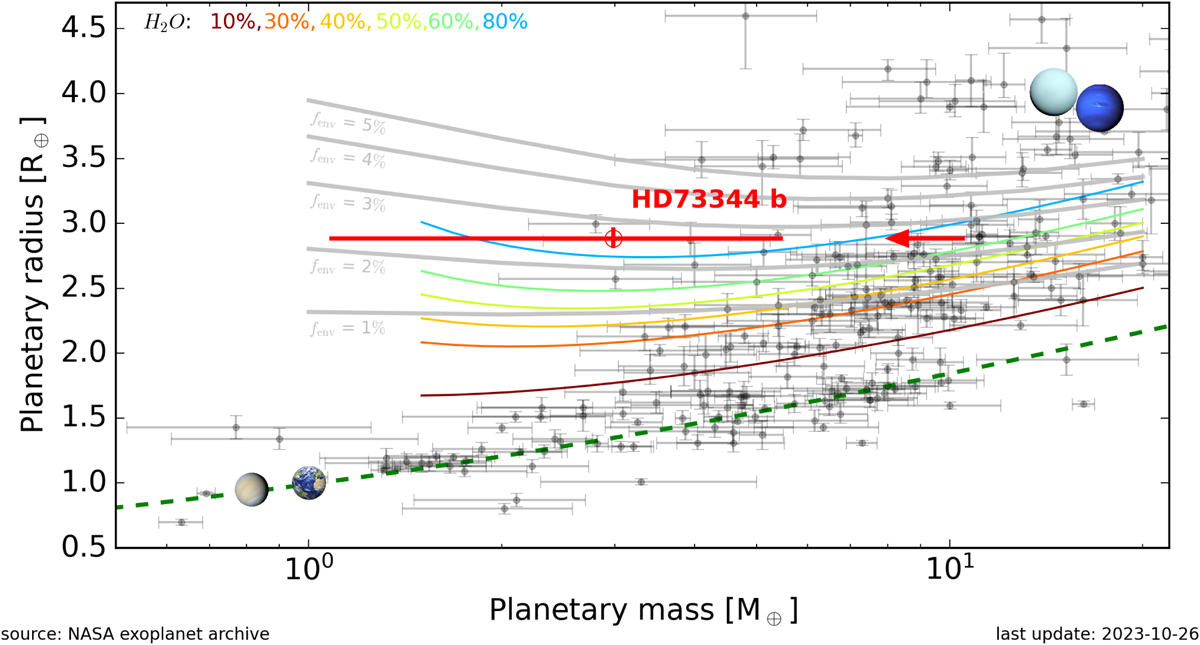Fig. 14

Download original image
Mass–radius diagram of confirmed exoplanets with mass and radius precision better than 3σ and 10σ, respectively. Planetary parameters (black dots) are taken from the NASA Exoplanet Archive (https://exoplanetarchive.ipac.caltech.edu), and updated to October 2023. HD 73344b is represented by the red dot. The red arrow represents the upper 10σ limit on its mass. Composition models calculated from Aguichine et al. (2021) with a core mass fraction of 30% and various H2O mass fraction (from 10% to 80%) are represented by coloured lines (see text). Composition models calculated from Lopez & Fortney (2014) for a 1 Gyr-old system, Teq,b ~ 900 K, and an envelope mass fraction fenv = [1, 2, 3, 4, 5] % are shown in gray. For comparison, the relation for an Earth-like composition (32.5% core, 67.5% mantle) from Brugger et al. (2017) is shown by the green dashed curve, and some solar system planets (Venus, the Earth, Uranus and Neptune) are displayed.
Current usage metrics show cumulative count of Article Views (full-text article views including HTML views, PDF and ePub downloads, according to the available data) and Abstracts Views on Vision4Press platform.
Data correspond to usage on the plateform after 2015. The current usage metrics is available 48-96 hours after online publication and is updated daily on week days.
Initial download of the metrics may take a while.


